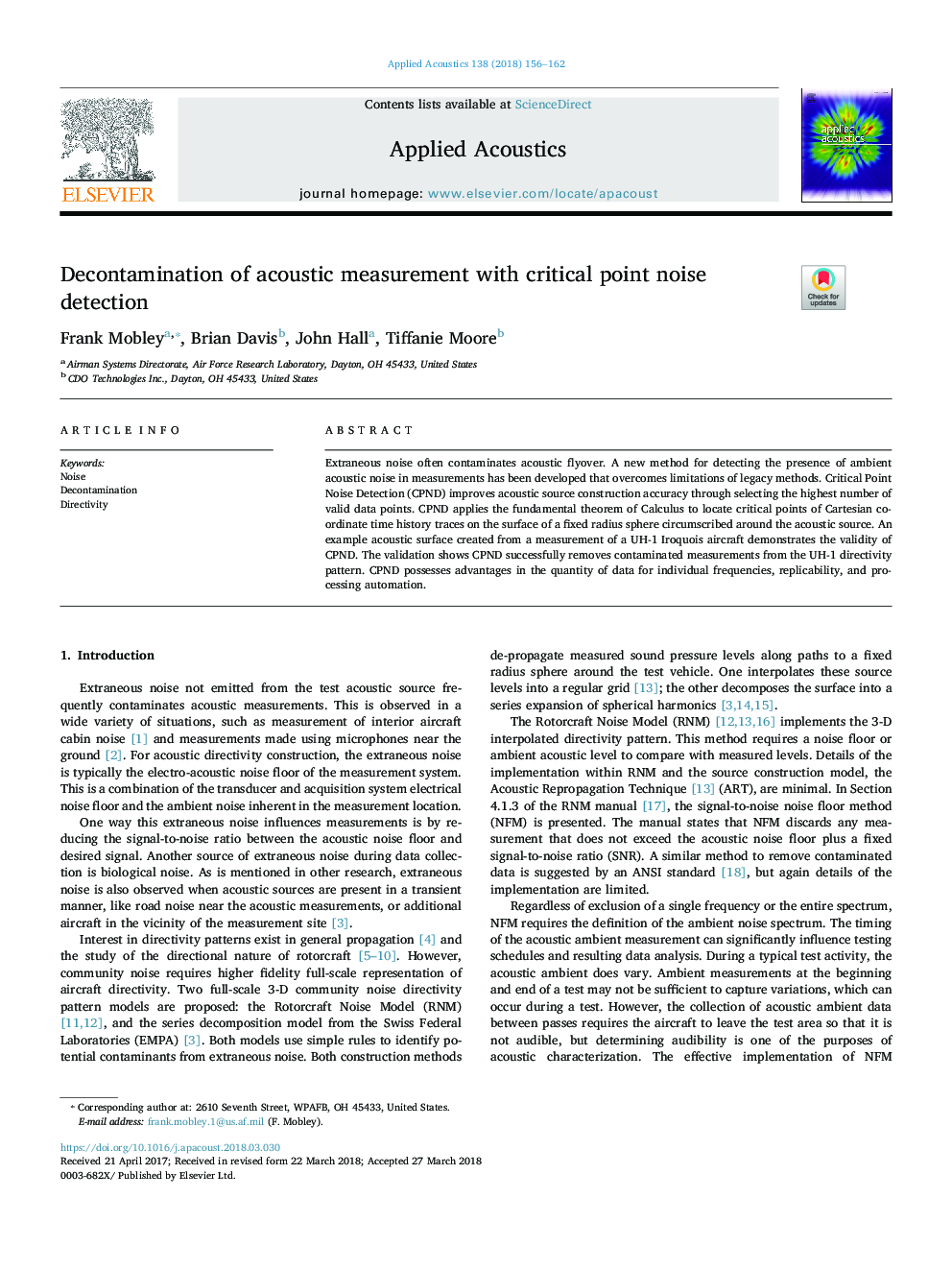| Article ID | Journal | Published Year | Pages | File Type |
|---|---|---|---|---|
| 7152177 | Applied Acoustics | 2018 | 7 Pages |
Abstract
Extraneous noise often contaminates acoustic flyover. A new method for detecting the presence of ambient acoustic noise in measurements has been developed that overcomes limitations of legacy methods. Critical Point Noise Detection (CPND) improves acoustic source construction accuracy through selecting the highest number of valid data points. CPND applies the fundamental theorem of Calculus to locate critical points of Cartesian coordinate time history traces on the surface of a fixed radius sphere circumscribed around the acoustic source. An example acoustic surface created from a measurement of a UH-1 Iroquois aircraft demonstrates the validity of CPND. The validation shows CPND successfully removes contaminated measurements from the UH-1 directivity pattern. CPND possesses advantages in the quantity of data for individual frequencies, replicability, and processing automation.
Keywords
Related Topics
Physical Sciences and Engineering
Engineering
Mechanical Engineering
Authors
Frank Mobley, Brian Davis, John Hall, Tiffanie Moore,
